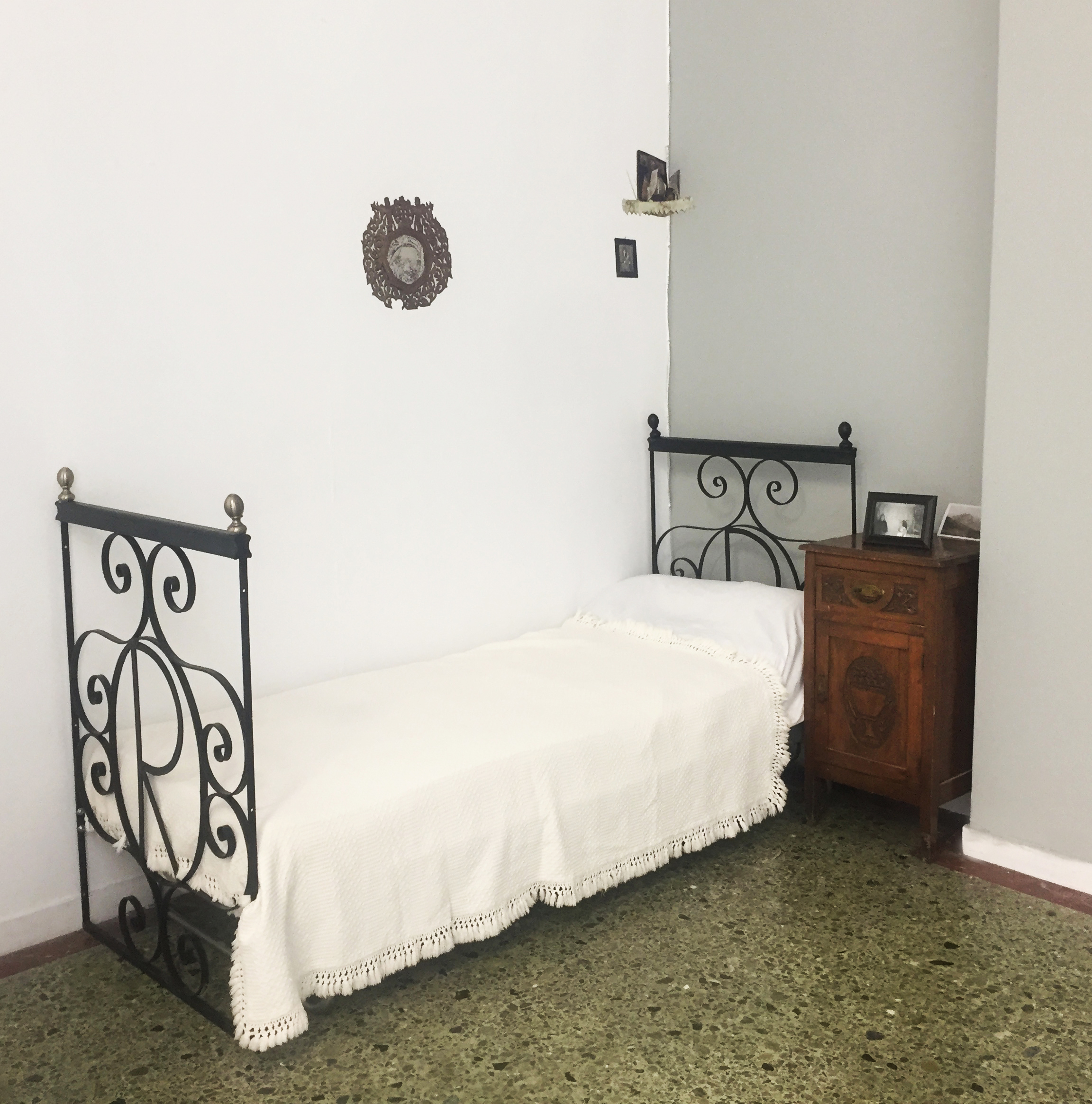PLEIN SOLEIL
2021

Plein Soleil represents a 1966 photograph from Margaret Kenna's archive which she describes as "the last curtain-bed on the island". The representation aims at the interaction with the audience and the contemporary reality that the island faces. In one of her most recent texts, Kenna examines the categories of tourists in Anafi and their interaction through two dominant parameters, the natural environment and the locals. She observes that there is an intense search for identity and authenticity, which is formed through the acquaintanceship and consequently the safeguarding of the relationship with the island. The construction of this 'authentic identity' is reinforced through social media sharings and posts. The constant self-referentiality and self-reflection of each visitor, Kenna emphasizes, traps the island by subjecting it to constant control and questioning.
The title of the work "Plein Soleil", references the actual title of the 1960’s movie, based on the well-known novel by Patricia Highsmith, The Talented Mr. Ripley. A widespread genre of detective fiction is the so-called 'exotic' or 'travel'. The genre has become popular, not only because of the plot that takes place in non-Western countries, but also because of the role it has played in alleviating the social concerns of the Western world about the exotic-other and the unknown and sometimes threatening aspects of it.The work includes, in addition to the elements that compose this photo, a (hidden) camera that shows in real time what is happening behind the curtain. The public view, the constant monitoring and the recording of the activity of the visitors in this ‘private’ space, raises questions in relation to their presence. Visitors become suspicious and possibly guilty of canceling authenticity the very moment they recognize it as such.
